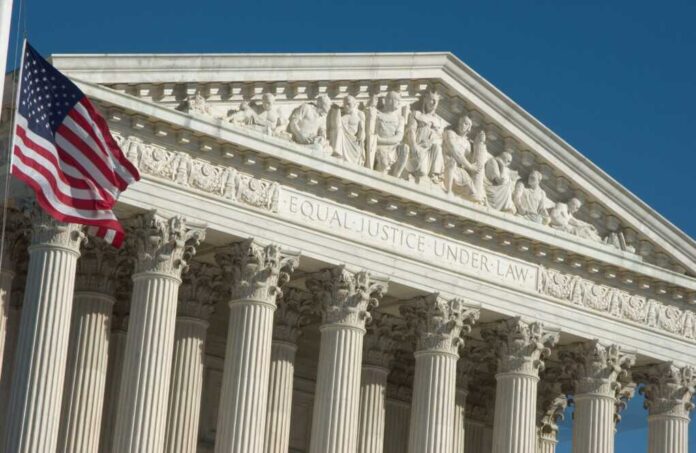
The U.S. Supreme Court’s recent decision in the Rahimi case, which confirmed the government’s ability to temporarily strip gun rights from individuals deemed dangerous, has not quelled the influx of firearm-related cases heading toward the nation’s highest court. Instead, it has set the stage for further legal battles over Second Amendment interpretations.
In an 8-1 ruling on Friday, the Supreme Court upheld a federal law that prohibits individuals under domestic violence restraining orders from possessing firearms. This decision was pivotal in the case of Zackey Rahimi, who had been found with a gun despite a restraining order against him in Texas. The ruling affirmed that the Second Amendment allows for restrictions on gun ownership by individuals posing a credible threat to society.
Justice Neil M. Gorsuch, in a concurring opinion, emphasized the limited scope of the ruling: “We do not resolve any of those questions (and perhaps others like them) because we cannot. Article III of the Constitution vests in this Court the power to decide only the ‘actual cas[e]’ before us, ‘not abstractions.'”
The ruling has left unresolved questions about broader Second Amendment rights, which are now the subject of numerous cases in lower courts. These include disputes over bans on semiautomatic rifles, restrictions on gun purchases, and the rights of illegal immigrants and drug users to possess firearms.
Justice Clarence Thomas, dissenting from the decision, argued that the government cannot strip Second Amendment rights from individuals without a criminal conviction: “The question is whether the Government can strip the Second Amendment right of anyone subject to a protective order — even if he has never been accused or convicted of a crime. It cannot.”
Legal experts suggest the ruling is a precursor to more contentious battles ahead. “This decision is just the beginning,” said Adam Winkler, a constitutional law professor at UCLA. “The Supreme Court will likely face numerous cases that challenge the boundaries of the Second Amendment as interpreted through the lens of historical context.”
President Biden’s administration has faced criticism for its approach to gun control, with opponents arguing that recent policies have overreached. The administration’s handling of gun laws is expected to remain a contentious issue as more cases make their way to the Supreme Court.
Justice Amy Coney Barrett, concurring with the majority, highlighted the evolving nature of constitutional interpretation: “Despite its unqualified text, the Second Amendment is not absolute. It codified a preexisting right, and preexisting limits on that right are part and parcel of it.”
The decision also drew comments from Justice Sonia Sotomayor, who expressed concerns about relying strictly on historical context: “History has a role to play in Second Amendment analysis, but a rigid adherence to history impoverishes constitutional interpretation and hamstrings our democracy.”
The Rahimi ruling is the second major gun-related decision by the Supreme Court this term. Earlier, the court overturned the Bureau of Alcohol, Tobacco, Firearms and Explosives’ redefinition of bump stocks as machine guns, stating that such regulatory changes require Congressional action.
As the legal landscape surrounding the Second Amendment continues to evolve, the Supreme Court’s future rulings will likely have significant implications for gun rights and regulations in the United States. The influx of cases challenging various aspects of gun control ensures that the nation’s highest court will remain at the center of this critical and divisive issue.














